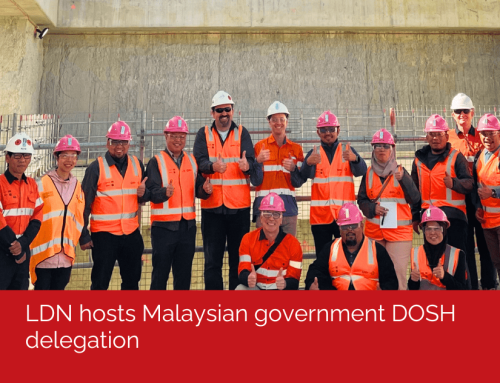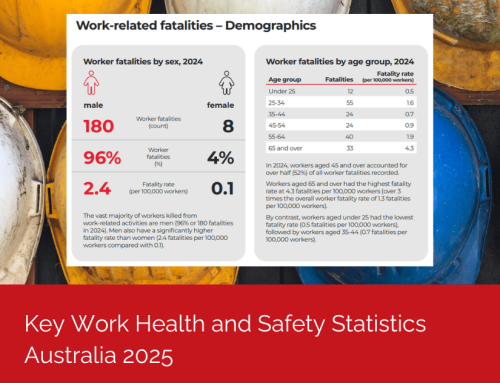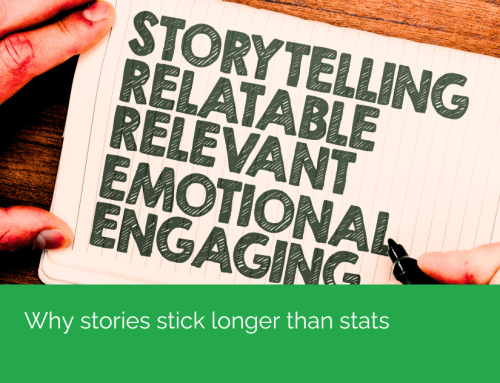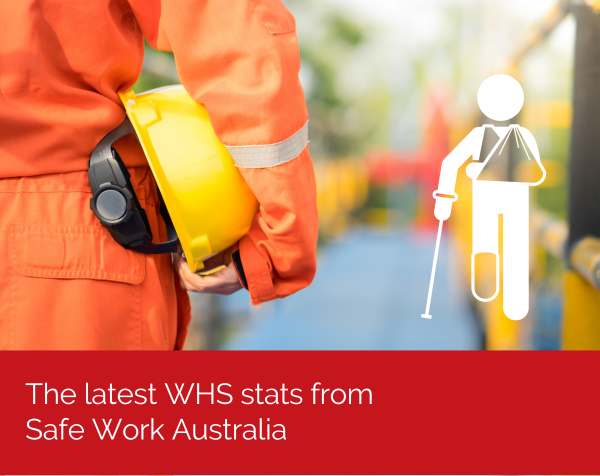
Despite advancements in workplace health and safety measures, the latest Safe Work Australia statistics reveal a persistent problem with serious injuries, fatalities, and illnesses arising from work in Australia.
The ‘Key Work Health and Safety Statistics’ report by Safe Work Australia presents alarming data, highlighting that despite efforts to bolster workplace health and safety, Australia still faces a substantial challenge with work-related injuries, fatalities, and illnesses.
Over the last decade, more than 1,850 workers have tragically lost their lives due to work-related traumatic injuries, while over 1.14 million have submitted serious workers’ compensation claims for injuries requiring them to take more than a week off work.
The report highlights the leading causes of these incidents, including body stressing, falls, slips, trips, and being hit by moving objects, alongside a notable rise in work-related mental health conditions.
These findings underscore the critical need for ongoing improvements in workplace safety measures to protect workers from harm.
Work-related injury fatalities

195 lives were lost in the reporting period, predominantly due to vehicle incidents and impacts from moving objects.
Worker fatalities by most common mechanism of incident
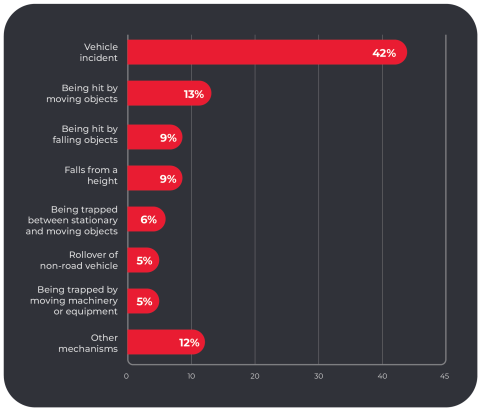
Trends in worker fatalities since 2003
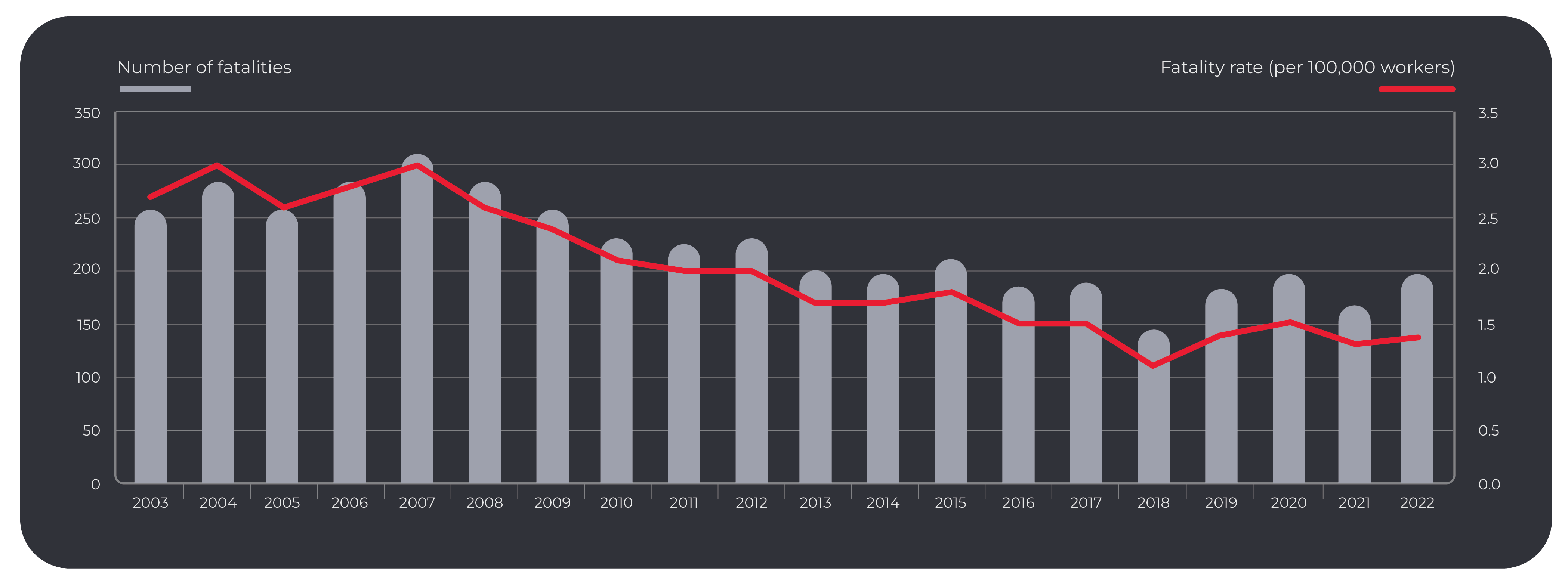
While there has been a general downward trend in the number and rate of fatalities since 2007, there was a 13% increase in fatalities from the previous year. Over the past five years, the average fatality rate was 1.4 per 100,000 workers, with an average of 180 fatalities annually, with the lowest fatality rate of 1.1 per 100,000 workers recorded in 2018.
Worker fatalities by State/Territory
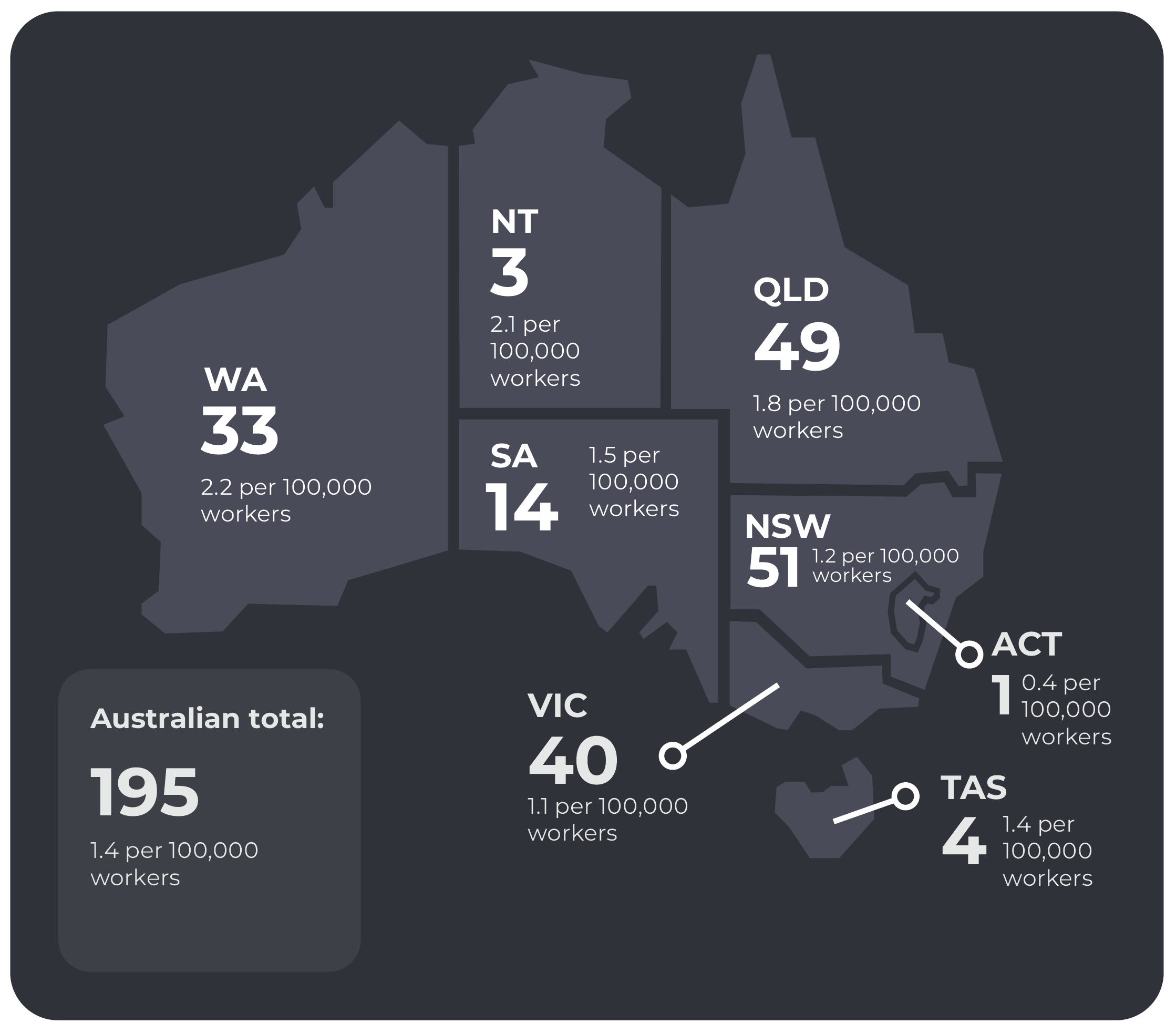
Serious claims by occupation
The serious claims frequency rate was highest for persons employed as labourers (24.8 claims per million hours worked), followed by community and personal service workers (15.6), machinery operators and drivers (11.5), and technicians and trades workers (7.4).

Serious claims by most common mechanism
The most common work-related injuries in Australia result from body stressing, falls, slips, trips, and being struck by moving objects.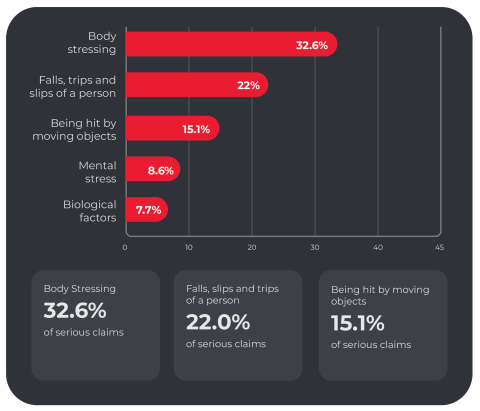
Every worker is entitled to a safe and healthy work environment. Yet, the reality is that work-related injuries and illnesses can occur across any industry or occupation, impacting not just the individuals involved but also their families and the wider community.
These statistics serve as a sobering reminder of the importance of maintaining and enhancing safety standards to protect workers across Australia.
Source: https://data.safeworkaustralia.gov.au/insights/key-whs-stats-2023
Note: The latest statistics Key Work Health and Safety Statistics Australia 2023 covers the finalised statics for the year ending 2022. Figures are updated only once all the appropriate authorities have investigated the deaths and more accurate information becomes available. Only then does Safe Work Australia include the incident in their statistics and publish a final report. For preliminary data for 2023 and 2024, visit https://data.safeworkaustralia.gov.au/interactive-data/topic/preliminary-fatalities-2024
